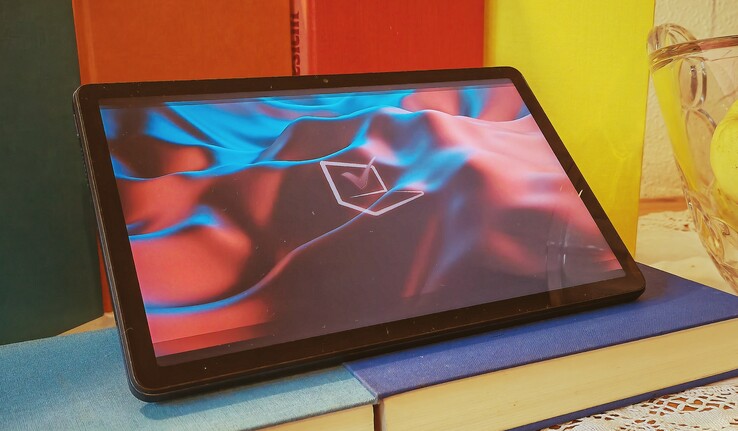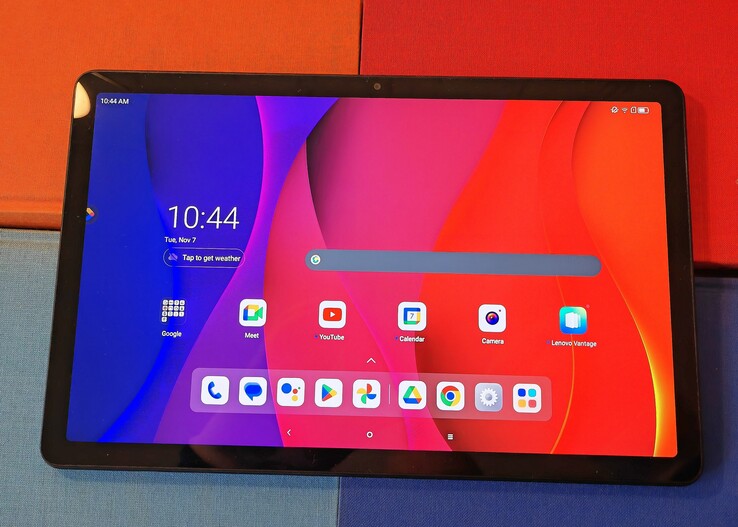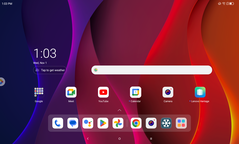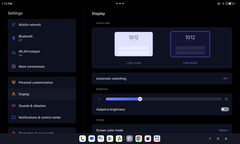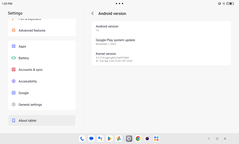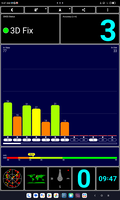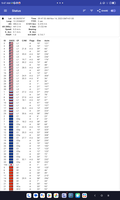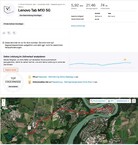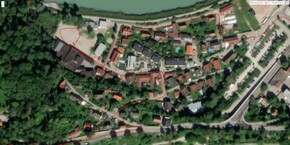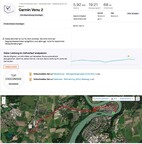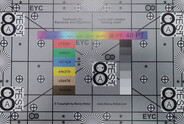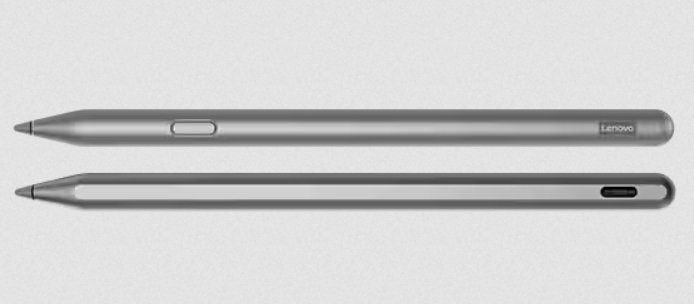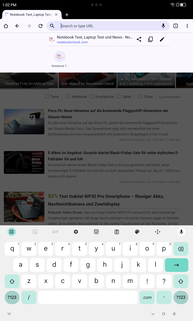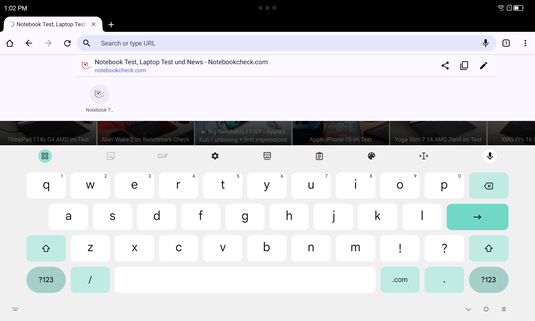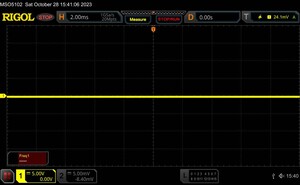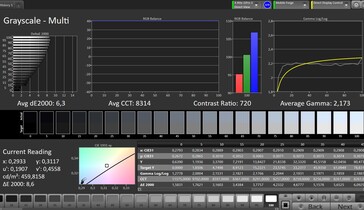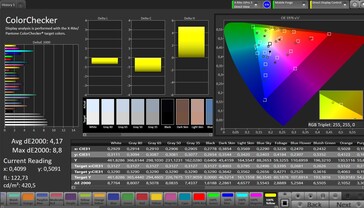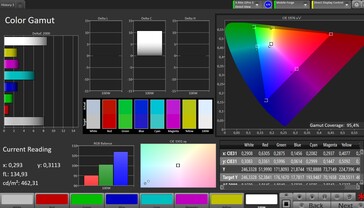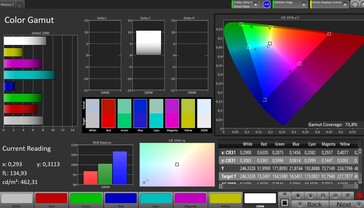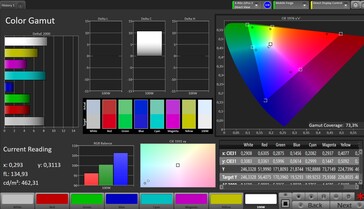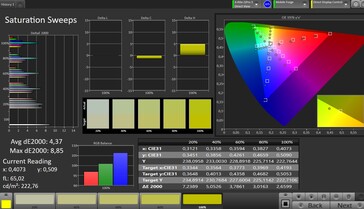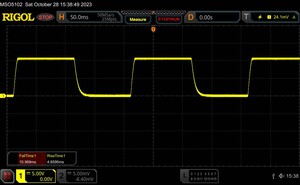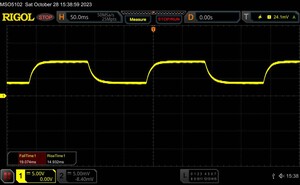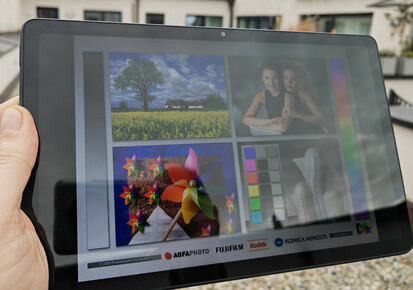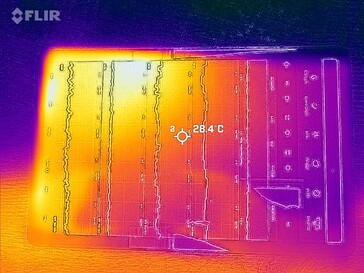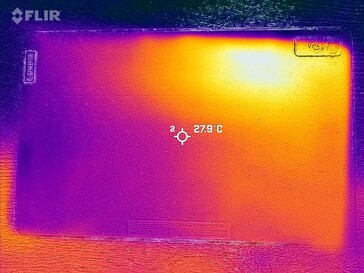Lenovo Tab M10 5G in review – Tablet with mobile connections and long battery life
Lenovo offers a variety of tablets, with a primary focus on the mid-range market. While the Tab P11 5G stands out as a compelling choice, the company has introduced a 5G model for its more affordable Tab M10. This 10.6-inch tablet is currently competitively priced at less than $200 USD.
In our review, we closely examine whether this mid-range tablet is truly worth considering, given its slightly older SoC and some minor cost-saving measures compared to the Tab P11 5G. Can its robust battery capacity compensate for these shortcomings?
Top 10 Laptops
Multimedia, Budget Multimedia, Gaming, Budget Gaming, Lightweight Gaming, Business, Budget Office, Workstation, Subnotebooks, Ultrabooks, Chromebooks
under 300 USD/Euros, under 500 USD/Euros, 1,000 USD/Euros, for University Students, Best Displays
Top 10 Smartphones
Smartphones, Phablets, ≤6-inch, Camera Smartphones
Potential Competitors in Comparison
Rating | Date | Model | Weight | Height | Size | Resolution | Best Price |
|---|---|---|---|---|---|---|---|
| 82.6 % | 11/2023 | Lenovo Tab M10 5G SD 695 5G, Adreno 619 | 490 g | 8.3 mm | 10.60" | 2000x1200 | |
| 80 % | 03/2023 | Lenovo Tab M10 Gen 3 T610, Mali-G52 MP2 | 460 g | 8.5 mm | 10.10" | 1920x1200 | |
| 85.2 % | 02/2023 | Lenovo Tab P11 5G SD 750G 5G, Adreno 619 | 520 g | 7.5 mm | 11.00" | 2000x1200 | |
| 88.8 % | 08/2023 | Xiaomi Pad 6 SD 870, Adreno 650 | 490 g | 6.51 mm | 11.00" | 2880x1800 | |
| 89.3 % | 04/2023 | OnePlus Pad Dimensity 9000, Mali-G710 MP10 | 552 g | 6.5 mm | 11.61" | 2800x2000 |
Case – A plastic back end
The tablet's back is made of plastic and is either dark blue or dark gray, with a slightly contrasting color at the top. Without a cover, fingerprints will quickly accumulate on the rear, despite the matt appearance. According to the producer, there is basic dust and splash water protection, although the tablet should not be submerged in water.
The Tab M10 5G weighs 1.08 lbs, which is modest given its size. The screen's borders are intended to allow you to hold the tablet comfortably without unintentionally touching the touchscreen, while yet maintaining a contemporary appearance.
It has a good build quality; pressure seldom passes through to the screen, the case can only be bent a little, and material transitions are so smooth that you can scarcely feel them.
Connectivity – 5G, but without eSIM
Lenovo's tablet comes with 6 GB of RAM and 128 GB of UFS 2.2 flash storage, which is typical for tablets in this price range. Nevertheless, the Xiaomi Pad 6 offers even faster mass storage.
Unlike the Tab P11 5G, this tablet features a USB 2.0 port, resulting in slower cable data transfers and the inability to mirror screen content on external monitors through a cable.
While the tablet includes a 3.5 mm audio port, it lacks an NFC module, preventing the use of payment services like Google Pay.
For cellular capabilities, a nano SIM is required, as eSIMs are not supported.
microSD card reader
In addition to the SIM slot, there's an option to expand memory using a microSD card. The card reader performs quite well, outpacing similar devices in our copying test.
| SD Card Reader - average JPG Copy Test (av. of 3 runs) | |
| Lenovo Tab M10 5G (Angelbird V60) | |
| Lenovo Tab P11 5G (Angelbird V60) | |
| Lenovo Tab M10 Gen 3 (Angelbird V60) | |
Cross Platform Disk Test (CPDT)
Software – Pure Android
The Lenovo Tab M10 5G runs on Android 13, with minimal modifications from Lenovo. This makes it user-friendly for experienced Android users.
Lenovo avoids installing third-party software for advertising purposes, opting instead for note-taking and drawing apps for pen input, a relaxation app, the Lenovo Service app, and Lenovo Freestyle for device connectivity.
As of the testing period, the security patches are dated July 2023. Lenovo pledges an update to Android 14 and commits to providing 3.5 years of software updates, potentially until the end of 2026.
Communication and GNSS – WLAN barely works
The tablet connects via WiFi 5, providing stable and suitable data rates, especially when tested with the Asus ROG Rapture AXE11000 reference router.
However, it's worth noting that many tablets in the same price range offer faster internet connection options, as seen with devices like the Xiaomi Pad 6 and the OnePlus Pad.
Thanks to its plastic case, the built-in 5G modem could establish relatively undisturbed and stable connections during our two-week test period, supporting numerous 4G and 5G frequencies for versatile mobile internet use while traveling.
While the tablet includes a telephone function, it's recommended to use a headset in public, as the sound is output through the speakers, potentially allowing others to listen in.
| Networking | |
| iperf3 receive AXE11000 | |
| OnePlus Pad | |
| Xiaomi Pad 6 | |
| Lenovo Tab P11 5G | |
| Lenovo Tab M10 Gen 3 | |
| Lenovo Tab M10 5G | |
| iperf3 transmit AXE11000 | |
| OnePlus Pad | |
| Xiaomi Pad 6 | |
| Lenovo Tab P11 5G | |
| Lenovo Tab M10 Gen 3 | |
| Lenovo Tab M10 5G | |
The tablet's GNSS module supports all major global networks but does not use SBAS for more precise tracking. Indoors, location determination is approximate, but stepping outside results in quick and accurate location tracking with up to 10 ft accuracy.
We took the tablet for a bike ride and compared it to the Garmin Venu 2 wristwatch to see how it performed in real-world circumstances.
The Lenovo tablet performs well in terms of localization, performing difficult maneuvers such as curves with ease and deviating just slightly from the real path on a few occasions. As a result, we recommend using a tablet for navigation and tracking.
Cameras – Average for a tablet
Tablets often compromise on camera quality, given that only a few users use the device for photography due to its form factor.
The 13-megapixel main camera on the Lenovo Tab M10 5G takes pictures with a rudimentary level of detail. Even in well-lit conditions, fine structures, like those on maple leaves, lack clarity, falling short of the quality found in high-end smartphone cameras.
In challenging conditions, such as low light and high contrast, the tablet's camera performance is subpar: bright areas appear too bright, dark areas lack detail, and overall sharpness is moderate.
Video recording is limited to a maximum of 1080p and 30 fps, with lower detail levels, occasional autofocus pumping, and noticeable exposure adjustments..
On the front, there's an 8-megapixel camera that captures somewhat dark selfies. While generally usable, they may lose some detail when enlarged.
Image Comparison
Choose a scene and navigate within the first image. One click changes the position on touchscreens. One click on the zoomed-in image opens the original in a new window. The first image shows the scaled photograph of the test device.
Hauptkamera PflanzeHauptkamera UmgebungHauptkamera Low LightWe took the tablet to the photo lab, where the main camera captured a photo of our test chart in both full studio lighting and low-light conditions of 1 lux.
In optimal lighting, the photo appeared cloudy and lacked contrast, while at 1 lux, very little was recognizable in the picture.
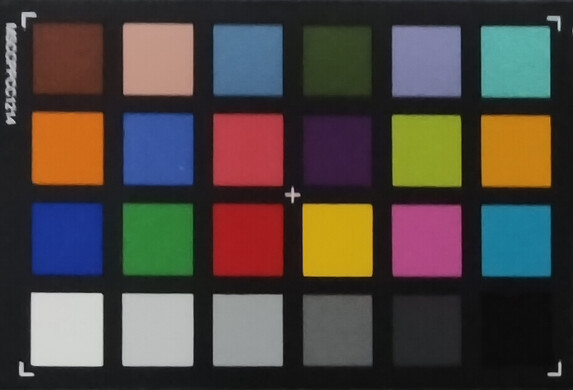

Accessories and warranty – Stylus available separately
The Lenovo Tab M10 5G TB360ZU comes with a charger, cable, and SIM tool. Lenovo also sells a matching protective cover and an integrated stand.
For users interested in a stylus, the Lenovo Tab Pen Plus is available separately. It features 4,096 pressure and tilt levels, a USB-C port for charging, and connects to the tablet via Bluetooth.
Lenovo offers a 12-month warranty on its products for orders made within the USA.
Input devices & operation – No fingerprint sensor
Because of the 90 Hz panel, the touchscreen is extremely responsive and remains sensitive even in the corners. The hardware buttons on the top and left sides of the case are simple to use.
There is no fingerprint sensor, thus the tablet must rely on 2D facial identification via the front camera. This method works relatively quickly and reliably.
Display – Quite bright IPS screen without PWM
The IPS display of the Lenovo Tab M10 5G achieves an impressive brightness of up to 472 cd/m² during our test, notably higher than similarly priced tablets.
The resolution of 2,000 x 1,200 pixels enables a clear display on the 10.6-inch panel. The Widevine L1 certification enables HD streaming content.
However, the black level is less convincing, and the contrast appears weak, resulting in a somewhat dull picture. Fortunately, the white balance can be adjusted in the settings, and it can reduce the blue content in the picture using the night light feature.
| |||||||||||||||||||||||||
Brightness Distribution: 89 %
Center on Battery: 472 cd/m²
Contrast: 749:1 (Black: 0.63 cd/m²)
ΔE Color 4.17 | 0.5-29.43 Ø5.1
ΔE Greyscale 6.3 | 0.57-98 Ø5.3
95.4% sRGB (Calman 2D)
Gamma: 2.173
| Lenovo Tab M10 5G IPS, 2000x1200, 10.60 | Lenovo Tab M10 Gen 3 IPS, 1920x1200, 10.10 | Lenovo Tab P11 5G IPS, 2000x1200, 11.00 | Xiaomi Pad 6 IPS LCD, 2880x1800, 11.00 | OnePlus Pad IPS, 2800x2000, 11.61 | |
|---|---|---|---|---|---|
| Screen | -5% | 3% | 34% | 34% | |
| Brightness middle | 472 | 343 -27% | 358 -24% | 541 15% | 474 0% |
| Brightness | 448 | 332 -26% | 338 -25% | 494 10% | 447 0% |
| Brightness Distribution | 89 | 94 6% | 88 -1% | 89 0% | 89 0% |
| Black Level * | 0.63 | 0.31 51% | 0.47 25% | 0.65 -3% | 0.32 49% |
| Contrast | 749 | 1106 48% | 762 2% | 832 11% | 1481 98% |
| Colorchecker dE 2000 * | 4.17 | 5.9 -41% | 3.94 6% | 0.9 78% | 3.16 24% |
| Colorchecker dE 2000 max. * | 8.8 | 11.2 -27% | 7.38 16% | 1.8 80% | 5.37 39% |
| Greyscale dE 2000 * | 6.3 | 7.9 -25% | 4.7 25% | 1.4 78% | 2.5 60% |
| Gamma | 2.173 101% | 2.184 101% | 2.211 100% | 2.26 97% | 2.09 105% |
| CCT | 8314 78% | 9198 71% | 7666 85% | 6710 97% | 7112 91% |
* ... smaller is better
Screen Flickering / PWM (Pulse-Width Modulation)
| Screen flickering / PWM not detected | |||
In comparison: 53 % of all tested devices do not use PWM to dim the display. If PWM was detected, an average of 18716 (minimum: 5 - maximum: 3846000) Hz was measured. | |||
No PWM was detected in our measurements, but the slow response times may render the screen unsuitable for demanding users.
Our spectrophotometer and CalMAN software reveal a noticeable blue cast in our measurements. Overall, the color reproduction is quite decent, except for bright blue tones and white.
Display Response Times
| ↔ Response Time Black to White | ||
|---|---|---|
| 16 ms ... rise ↗ and fall ↘ combined | ↗ 11 ms rise | |
| ↘ 5 ms fall | ||
| The screen shows good response rates in our tests, but may be too slow for competitive gamers. In comparison, all tested devices range from 0.1 (minimum) to 240 (maximum) ms. » 30 % of all devices are better. This means that the measured response time is better than the average of all tested devices (21.8 ms). | ||
| ↔ Response Time 50% Grey to 80% Grey | ||
| 34 ms ... rise ↗ and fall ↘ combined | ↗ 19 ms rise | |
| ↘ 15 ms fall | ||
| The screen shows slow response rates in our tests and will be unsatisfactory for gamers. In comparison, all tested devices range from 0.2 (minimum) to 636 (maximum) ms. » 39 % of all devices are better. This means that the measured response time is similar to the average of all tested devices (34.3 ms). | ||
Performance - Lenovo Tab M10 5G with relatively limited power
The Qualcomm Snapdragon 695, being two years old, provides relatively modest power compared to similarly priced devices in our benchmarks, placing it in the midrange at best.
During our test period, everyday use showed minimal stutters, but the device can reach its limits when handling very complex apps and multitasking.
| Geekbench 5.5 | |
| Single-Core | |
| OnePlus Pad | |
| Xiaomi Pad 6 | |
| Average of class Tablet (140 - 1892, n=51, last 2 years) | |
| Average Qualcomm Snapdragon 695 5G (659 - 697, n=22) | |
| Lenovo Tab M10 5G | |
| Lenovo Tab P11 5G | |
| Lenovo Tab M10 Gen 3 | |
| Multi-Core | |
| OnePlus Pad | |
| Xiaomi Pad 6 | |
| Average of class Tablet (312 - 8524, n=51, last 2 years) | |
| Lenovo Tab M10 5G | |
| Average Qualcomm Snapdragon 695 5G (1663 - 2038, n=22) | |
| Lenovo Tab P11 5G | |
| Lenovo Tab M10 Gen 3 | |
| Geekbench 6.2 | |
| Single-Core | |
| Xiaomi Pad 6 | |
| Average of class Tablet (203 - 2107, n=20, last 2 years) | |
| Average Qualcomm Snapdragon 695 5G (893 - 918, n=6) | |
| Lenovo Tab M10 5G | |
| Multi-Core | |
| Xiaomi Pad 6 | |
| Average of class Tablet (493 - 5652, n=20, last 2 years) | |
| Average Qualcomm Snapdragon 695 5G (2058 - 2189, n=6) | |
| Lenovo Tab M10 5G | |
| Antutu v9 - Total Score | |
| OnePlus Pad | |
| Xiaomi Pad 6 | |
| Average of class Tablet (92766 - 1416727, n=44, last 2 years) | |
| Lenovo Tab P11 5G | |
| Lenovo Tab M10 5G | |
| Average Qualcomm Snapdragon 695 5G (344344 - 416086, n=16) | |
| Lenovo Tab M10 Gen 3 | |
| PCMark for Android - Work 3.0 | |
| OnePlus Pad | |
| Xiaomi Pad 6 | |
| Average Qualcomm Snapdragon 695 5G (6897 - 11732, n=21) | |
| Lenovo Tab M10 5G | |
| Average of class Tablet (4045 - 17267, n=47, last 2 years) | |
| Lenovo Tab P11 5G | |
| CrossMark - Overall | |
| OnePlus Pad | |
| Xiaomi Pad 6 | |
| Average of class Tablet (172 - 1585, n=43, last 2 years) | |
| Lenovo Tab M10 5G | |
| Average Qualcomm Snapdragon 695 5G (521 - 606, n=16) | |
| Lenovo Tab P11 5G | |
| Lenovo Tab M10 Gen 3 | |
| BaseMark OS II | |
| Overall | |
| OnePlus Pad | |
| Xiaomi Pad 6 | |
| Average of class Tablet (444 - 8886, n=41, last 2 years) | |
| Lenovo Tab M10 5G | |
| Average Qualcomm Snapdragon 695 5G (3171 - 3848, n=17) | |
| Lenovo Tab P11 5G | |
| Lenovo Tab M10 Gen 3 | |
| System | |
| OnePlus Pad | |
| Xiaomi Pad 6 | |
| Lenovo Tab M10 5G | |
| Average Qualcomm Snapdragon 695 5G (6789 - 8231, n=17) | |
| Lenovo Tab P11 5G | |
| Average of class Tablet (1103 - 14097, n=41, last 2 years) | |
| Lenovo Tab M10 Gen 3 | |
| Memory | |
| OnePlus Pad | |
| Xiaomi Pad 6 | |
| Lenovo Tab P11 5G | |
| Average of class Tablet (916 - 8890, n=41, last 2 years) | |
| Average Qualcomm Snapdragon 695 5G (3167 - 4836, n=17) | |
| Lenovo Tab M10 5G | |
| Lenovo Tab M10 Gen 3 | |
| Graphics | |
| OnePlus Pad | |
| Xiaomi Pad 6 | |
| Average of class Tablet (580 - 31738, n=41, last 2 years) | |
| Lenovo Tab M10 5G | |
| Average Qualcomm Snapdragon 695 5G (3975 - 4426, n=17) | |
| Lenovo Tab P11 5G | |
| Lenovo Tab M10 Gen 3 | |
| Web | |
| OnePlus Pad | |
| Lenovo Tab M10 5G | |
| Xiaomi Pad 6 | |
| Average Qualcomm Snapdragon 695 5G (1078 - 1382, n=17) | |
| Average of class Tablet (10 - 1907, n=41, last 2 years) | |
| Lenovo Tab P11 5G | |
| Lenovo Tab M10 Gen 3 | |
| AImark - Score v3.x | |
| OnePlus Pad | |
| Average of class Tablet (84 - 156427, n=22, last 2 years) | |
| Lenovo Tab P11 5G | |
| Average Qualcomm Snapdragon 695 5G (445 - 3080, n=5) | |
| Lenovo Tab M10 5G | |
| Lenovo Tab M10 Gen 3 | |
| Xiaomi Pad 6 | |
| UL Procyon AI Inference - Overall Score | |
| OnePlus Pad | |
| Xiaomi Pad 6 | |
| Average of class Tablet (1662 - 73266, n=33, last 2 years) | |
| Lenovo Tab P11 5G | |
| Average Qualcomm Snapdragon 695 5G (5442 - 9348, n=13) | |
| Lenovo Tab M10 5G | |
| Lenovo Tab M10 Gen 3 | |
GPU benchmarks indicate that the tablet has ample power for complex apps at its native screen resolution; issues only arise at 1440p or 4K. However, it's worth noting that competitors from Xiaomi and OnePlus exhibit significantly more power in these scenarios.
GFXBench (DX / GLBenchmark) 2.7: T-Rex Onscreen | 1920x1080 T-Rex Offscreen
GFXBench 3.0: on screen Manhattan Onscreen OGL | 1920x1080 1080p Manhattan Offscreen
GFXBench 3.1: on screen Manhattan ES 3.1 Onscreen | 1920x1080 Manhattan ES 3.1 Offscreen
GFXBench: on screen Car Chase Onscreen | 1920x1080 Car Chase Offscreen | on screen Aztec Ruins High Tier Onscreen | 2560x1440 Aztec Ruins High Tier Offscreen | on screen Aztec Ruins Normal Tier Onscreen | 1920x1080 Aztec Ruins Normal Tier Offscreen | 3840x2160 4K Aztec Ruins High Tier Offscreen
| 3DMark / Wild Life Extreme Unlimited | |
| OnePlus Pad | |
| Xiaomi Pad 6 | |
| Lenovo Tab M10 5G | |
| Lenovo Tab P11 5G | |
| Lenovo Tab M10 Gen 3 | |
| 3DMark / Wild Life Extreme | |
| OnePlus Pad | |
| Xiaomi Pad 6 | |
| Lenovo Tab M10 5G | |
| Lenovo Tab P11 5G | |
| Lenovo Tab M10 Gen 3 | |
| 3DMark / Wild Life Unlimited Score | |
| OnePlus Pad | |
| Xiaomi Pad 6 | |
| Lenovo Tab M10 5G | |
| Lenovo Tab P11 5G | |
| Lenovo Tab M10 Gen 3 | |
| 3DMark / Wild Life Score | |
| OnePlus Pad | |
| Xiaomi Pad 6 | |
| Lenovo Tab M10 5G | |
| Lenovo Tab P11 5G | |
| Lenovo Tab M10 Gen 3 | |
| 3DMark / Sling Shot Extreme (ES 3.1) Unlimited | |
| OnePlus Pad | |
| Xiaomi Pad 6 | |
| Lenovo Tab M10 5G | |
| Lenovo Tab P11 5G | |
| Lenovo Tab M10 Gen 3 | |
| 3DMark / Sling Shot Extreme (ES 3.1) Unlimited Graphics | |
| OnePlus Pad | |
| Xiaomi Pad 6 | |
| Lenovo Tab M10 5G | |
| Lenovo Tab P11 5G | |
| Lenovo Tab M10 Gen 3 | |
| 3DMark / Sling Shot Extreme (ES 3.1) Unlimited Physics | |
| OnePlus Pad | |
| Xiaomi Pad 6 | |
| Lenovo Tab P11 5G | |
| Lenovo Tab M10 5G | |
| Lenovo Tab M10 Gen 3 | |
| GFXBench (DX / GLBenchmark) 2.7 / T-Rex Onscreen | |
| Xiaomi Pad 6 | |
| Lenovo Tab M10 5G | |
| Lenovo Tab P11 5G | |
| OnePlus Pad | |
| Lenovo Tab M10 Gen 3 | |
| GFXBench (DX / GLBenchmark) 2.7 / T-Rex Offscreen | |
| OnePlus Pad | |
| Xiaomi Pad 6 | |
| Lenovo Tab M10 5G | |
| Lenovo Tab P11 5G | |
| Lenovo Tab M10 Gen 3 | |
| GFXBench 3.0 / Manhattan Onscreen OGL | |
| OnePlus Pad | |
| Xiaomi Pad 6 | |
| Lenovo Tab M10 5G | |
| Lenovo Tab P11 5G | |
| Lenovo Tab M10 Gen 3 | |
| GFXBench 3.0 / 1080p Manhattan Offscreen | |
| OnePlus Pad | |
| Xiaomi Pad 6 | |
| Lenovo Tab M10 5G | |
| Lenovo Tab P11 5G | |
| Lenovo Tab M10 Gen 3 | |
| GFXBench 3.1 / Manhattan ES 3.1 Onscreen | |
| OnePlus Pad | |
| Xiaomi Pad 6 | |
| Lenovo Tab M10 5G | |
| Lenovo Tab P11 5G | |
| Lenovo Tab M10 Gen 3 | |
| GFXBench 3.1 / Manhattan ES 3.1 Offscreen | |
| OnePlus Pad | |
| Xiaomi Pad 6 | |
| Lenovo Tab M10 5G | |
| Lenovo Tab P11 5G | |
| Lenovo Tab M10 Gen 3 | |
| GFXBench / Car Chase Onscreen | |
| OnePlus Pad | |
| Xiaomi Pad 6 | |
| Lenovo Tab M10 5G | |
| Lenovo Tab P11 5G | |
| Lenovo Tab M10 Gen 3 | |
| GFXBench / Car Chase Offscreen | |
| OnePlus Pad | |
| Xiaomi Pad 6 | |
| Lenovo Tab P11 5G | |
| Lenovo Tab M10 5G | |
| Lenovo Tab M10 Gen 3 | |
| GFXBench / Aztec Ruins High Tier Onscreen | |
| OnePlus Pad | |
| Xiaomi Pad 6 | |
| Lenovo Tab M10 5G | |
| Lenovo Tab P11 5G | |
| Lenovo Tab M10 Gen 3 | |
| GFXBench / Aztec Ruins High Tier Offscreen | |
| OnePlus Pad | |
| Xiaomi Pad 6 | |
| Lenovo Tab M10 5G | |
| Lenovo Tab P11 5G | |
| Lenovo Tab M10 Gen 3 | |
| GFXBench / Aztec Ruins Normal Tier Onscreen | |
| OnePlus Pad | |
| Xiaomi Pad 6 | |
| Lenovo Tab M10 5G | |
| Lenovo Tab P11 5G | |
| Lenovo Tab M10 Gen 3 | |
| GFXBench / Aztec Ruins Normal Tier Offscreen | |
| OnePlus Pad | |
| Xiaomi Pad 6 | |
| Lenovo Tab M10 5G | |
| Lenovo Tab P11 5G | |
| Lenovo Tab M10 Gen 3 | |
| GFXBench / 4K Aztec Ruins High Tier Offscreen | |
| OnePlus Pad | |
| Xiaomi Pad 6 | |
| Lenovo Tab M10 5G | |
| Lenovo Tab P11 5G | |
| Lenovo Tab M10 Gen 3 | |
While benchmarks show reasonable performance when surfing the internet, possibly attributed to the newer browser version, in practical use, complex pages take a while to load. Notably, there is a delay in displaying photos when scrolling.
| Jetstream 2 - Total Score | |
| OnePlus Pad (Chrome 112) | |
| Lenovo Tab M10 5G (Chrome 118) | |
| Average of class Tablet (19.9 - 236, n=48, last 2 years) | |
| Xiaomi Pad 6 (Chrome 115) | |
| Average Qualcomm Snapdragon 695 5G (48.6 - 102.7, n=17) | |
| Lenovo Tab P11 5G (Chrome 109) | |
| Lenovo Tab M10 Gen 3 (Chrome 111) | |
| WebXPRT 4 - Overall Score | |
| OnePlus Pad (Chrome 112) | |
| Lenovo Tab M10 5G (Chrome 118) | |
| Xiaomi Pad 6 (Chrome 115) | |
| Average of class Tablet (21 - 227, n=40, last 2 years) | |
| Average Qualcomm Snapdragon 695 5G (58 - 107, n=16) | |
| Lenovo Tab P11 5G (Chrome 109) | |
| Lenovo Tab M10 Gen 3 (Chrome 111) | |
| Speedometer 2.0 - Result | |
| OnePlus Pad (Chrome 112) | |
| Average of class Tablet (14.7 - 376, n=42, last 2 years) | |
| Lenovo Tab M10 5G (Chrome 118) | |
| Xiaomi Pad 6 (Chrome 115) | |
| Average Qualcomm Snapdragon 695 5G (38.7 - 72.6, n=14) | |
| Lenovo Tab P11 5G (Chome 109) | |
| Lenovo Tab M10 Gen 3 (Chome 111) | |
| Octane V2 - Total Score | |
| OnePlus Pad (Chrome 112) | |
| Xiaomi Pad 6 (Chrome 115) | |
| Lenovo Tab M10 5G (Chrome 118) | |
| Average of class Tablet (5004 - 74614, n=54, last 2 years) | |
| Average Qualcomm Snapdragon 695 5G (17849 - 30733, n=19) | |
| Lenovo Tab P11 5G (Chrome 109) | |
| Lenovo Tab M10 Gen 3 (Chrome 111) | |
| Mozilla Kraken 1.1 - Total Score | |
| Lenovo Tab M10 Gen 3 (Chrome 111) | |
| Average of class Tablet (451 - 34733, n=49, last 2 years) | |
| Lenovo Tab P11 5G (Chrome 109) | |
| Average Qualcomm Snapdragon 695 5G (1309 - 2501, n=16) | |
| Xiaomi Pad 6 (Chrome 115) | |
| Lenovo Tab M10 5G (Chrome 118) | |
| OnePlus Pad (Chrome 112) | |
* ... smaller is better
The Lenovo Tab M10 5G features a relatively fast UFS 2.2 flash, though our benchmark indicates that the memory controller might not fully exploit its potential. Nevertheless, the memory is definitely faster than the eMMC flash in the non-5G variant of the Tab M10, resulting in rather fast data transfers and bearable loading times.
| Lenovo Tab M10 5G | Lenovo Tab M10 Gen 3 | Lenovo Tab P11 5G | Xiaomi Pad 6 | OnePlus Pad | Average 128 GB UFS 2.2 Flash | Average of class Tablet | |
|---|---|---|---|---|---|---|---|
| AndroBench 3-5 | -49% | 22% | 111% | 191% | 17% | 26% | |
| Sequential Read 256KB | 500.8 | 277.2 -45% | 921.5 84% | 1673.97 234% | 1866.48 273% | 711 ? 42% | 929 ? 86% |
| Sequential Write 256KB | 470.4 | 210.4 -55% | 415.2 -12% | 745.32 58% | 1616.83 244% | 520 ? 11% | 602 ? 28% |
| Random Read 4KB | 186.4 | 105.1 -44% | 174.6 -6% | 298.45 60% | 341.39 83% | 186.3 ? 0% | 169.1 ? -9% |
| Random Write 4KB | 159.3 | 78.5 -51% | 195.4 23% | 304.34 91% | 420.93 164% | 181.9 ? 14% | 155.6 ? -2% |
Gaming - Gaming possible at 30 fps
Since most mobile games are designed to run on slower devices, you can, of course, play games on the Tab M10 5G. Anyone expecting 60 fps or more due to the 90 Hz screen will be disappointed: We measured a maximum of 40 frames per second at extremely low settings in PUBG Mobile and a maximum of 30 frames per second in Diablo: Immortal using the GameBench software package.
Control via the touchscreen and position sensor is seamless, and most of the buttons are also very large considering the 10.6-inch screen. Keep in mind that little hands will find it difficult to reach all of the buttons, and the weight will wear your arms out faster than on a smartphone.
Emissions – Hardly any heating and no throttling
Temperature
Even under sustained load, our test device warms up to a maximum of 35 °C, which is barely detectable.
The 3DMark stress tests show that the SoC's performance is unaffected even after extended load.
(+) The maximum temperature on the upper side is 31.5 °C / 89 F, compared to the average of 34 °C / 93 F, ranging from 21.2 to 53.2 °C for the class Tablet.
(+) The bottom heats up to a maximum of 35 °C / 95 F, compared to the average of 33.5 °C / 92 F
(+) In idle usage, the average temperature for the upper side is 23.6 °C / 74 F, compared to the device average of 30.2 °C / 86 F.
3DMark Wild Life Stress Test
| 3DMark | |
| Wild Life Extreme Stress Test | |
| Lenovo Tab M10 5G | |
| Lenovo Tab M10 Gen 3 | |
| Lenovo Tab P11 5G | |
| OnePlus Pad | |
| Xiaomi Pad 6 | |
| Wild Life Stress Test Stability | |
| Lenovo Tab M10 5G | |
| Lenovo Tab P11 5G | |
| Lenovo Tab M10 Gen 3 | |
| Xiaomi Pad 6 | |
| OnePlus Pad | |
Speakers
The Lenovo Tab M10 5G features two speakers on the left and right sides of the case. In landscape mode, there are minor stereo effects. While the speakers reproduce speech adequately, they lack richness for music and are slightly treble-heavy.
It's more entertaining to connect external gadgets via the 3.5 mm jack or Bluetooth. This works well and supports the most significant wireless audio codecs, including SBC, AAC, aptX and aptX HD, as well as LDAC.
Lenovo Tab M10 5G audio analysis
(±) | speaker loudness is average but good (78.2 dB)
Bass 100 - 315 Hz
(-) | nearly no bass - on average 27.3% lower than median
(±) | linearity of bass is average (9.4% delta to prev. frequency)
Mids 400 - 2000 Hz
(+) | balanced mids - only 4.3% away from median
(±) | linearity of mids is average (7.7% delta to prev. frequency)
Highs 2 - 16 kHz
(±) | higher highs - on average 6.1% higher than median
(±) | linearity of highs is average (7.6% delta to prev. frequency)
Overall 100 - 16.000 Hz
(±) | linearity of overall sound is average (25.5% difference to median)
Compared to same class
» 77% of all tested devices in this class were better, 4% similar, 19% worse
» The best had a delta of 7%, average was 23%, worst was 129%
Compared to all devices tested
» 74% of all tested devices were better, 5% similar, 21% worse
» The best had a delta of 4%, average was 26%, worst was 134%
OnePlus Pad audio analysis
(+) | speakers can play relatively loud (86.6 dB)
Bass 100 - 315 Hz
(±) | reduced bass - on average 8.5% lower than median
(±) | linearity of bass is average (8.7% delta to prev. frequency)
Mids 400 - 2000 Hz
(+) | balanced mids - only 4% away from median
(+) | mids are linear (3.3% delta to prev. frequency)
Highs 2 - 16 kHz
(+) | balanced highs - only 2.6% away from median
(±) | linearity of highs is average (7.6% delta to prev. frequency)
Overall 100 - 16.000 Hz
(+) | overall sound is linear (9% difference to median)
Compared to same class
» 2% of all tested devices in this class were better, 2% similar, 97% worse
» The best had a delta of 7%, average was 23%, worst was 129%
Compared to all devices tested
» 2% of all tested devices were better, 0% similar, 98% worse
» The best had a delta of 4%, average was 26%, worst was 134%
Energy Management – Good stamina
Power Consumption
In terms of power consumption, the Lenovo Tab M10 5G is quite frugal, drawing moderate power from the battery in both idle mode and under high load.
The tablet supports a maximum charging speed of 20 watts. Due to the substantial battery capacity, it may take up to 3 hours to reach a 100% charge.
| Off / Standby | |
| Idle | |
| Load |
|
| Lenovo Tab M10 5G 7700 mAh | Lenovo Tab M10 Gen 3 5100 mAh | Lenovo Tab P11 5G 7500 mAh | Xiaomi Pad 6 8840 mAh | OnePlus Pad 9510 mAh | |
|---|---|---|---|---|---|
| Power Consumption | -64% | -88% | -164% | -228% | |
| Idle Minimum * | 1.2 | 1.9 -58% | 1.1 8% | 0.96 20% | 3.64 -203% |
| Idle Average * | 1.4 | 2.1 -50% | 3.3 -136% | 4.91 -251% | 6.84 -389% |
| Idle Maximum * | 1.9 | 2.5 -32% | 4 -111% | 5.07 -167% | 7.15 -276% |
| Load Average * | 3.5 | 7.6 -117% | 7.2 -106% | 11.8 -237% | 8.98 -157% |
| Load Maximum * | 5.6 | 9 -61% | 11 -96% | 15.9 -184% | 11.9 -113% |
* ... smaller is better
Power input: Geekbench (150 cd/m²)
Power input: GFXBench (150 cd/m²)
Battery Life
The Lenovo Tab M10 5G has a long battery life thanks to its large 7,700 mAh battery. The combination of the large battery capacity and low power usage resulted in an astounding 15:44 hours in our WLAN test, outperforming all comparably priced devices.
The tablet also demonstrates prolonged battery life when performing high-demand activities like watching movies or playing games, making it the overall runtime leader among comparison devices.
| Lenovo Tab M10 5G 7700 mAh | Lenovo Tab M10 Gen 3 5100 mAh | Lenovo Tab P11 5G 7500 mAh | Xiaomi Pad 6 8840 mAh | OnePlus Pad 9510 mAh | |
|---|---|---|---|---|---|
| Battery Runtime | -13% | -12% | -13% | -18% | |
| Reader / Idle | 2004 | 1952 -3% | 1732 -14% | 2154 7% | 1345 -33% |
| H.264 | 1109 | 1002 -10% | 943 -15% | 741 -33% | 963 -13% |
| WiFi v1.3 | 944 | 861 -9% | 762 -19% | 823 -13% | 648 -31% |
| Load | 297 | 213 -28% | 298 0% | 265 -11% | 310 4% |
Pros
Cons
Verdict - Not a great price-performance ratio
The Lenovo Tab M10 5G is part of Lenovo's lower-priced tablet line, setting itself apart from the more expensive Tab P11 5G in a number of ways. It features a plastic casing, 2 speakers instead of 4, a single USB 2.0 port, less advanced WLAN, and an overall less powerful SoC.
It's surprising that Lenovo has priced both tablets the same. Although the Tab M10 5G provides better opportunities for price reductions due to its cheaper components, there's no indication of a price reduction yet.
If you can find the Tab M10 5G for less than $200 USD, it could be a compelling bargain. Noteworthy features include extended battery life, lightweight design, a relatively clean Android experience, and phone functionality. Additionally, it offers good positioning capabilities and supports the use of a stylus.
The Lenovo Tab M10 5G offers great runtimes and mobile communications, but is currently quite expensive due to its low performance and slow Wi-Fi.
In comparison, the Xiaomi Pad 6 offers superior performance and stylus support. The OnePlus Pad is also significantly faster, though both lack mobile communication capabilities.
Price & availability
Lenovo Tab M10 5G
-
11/14/2023 v7
Florian Schmitt
Transparency
The present review sample was made available to the author as a loan by the manufacturer or a shop for the purposes of review. The lender had no influence on this review, nor did the manufacturer receive a copy of this review before publication. There was no obligation to publish this review.


 Deutsch
Deutsch English
English Español
Español Français
Français Italiano
Italiano Nederlands
Nederlands Polski
Polski Português
Português Русский
Русский Türkçe
Türkçe Svenska
Svenska Chinese
Chinese Magyar
Magyar